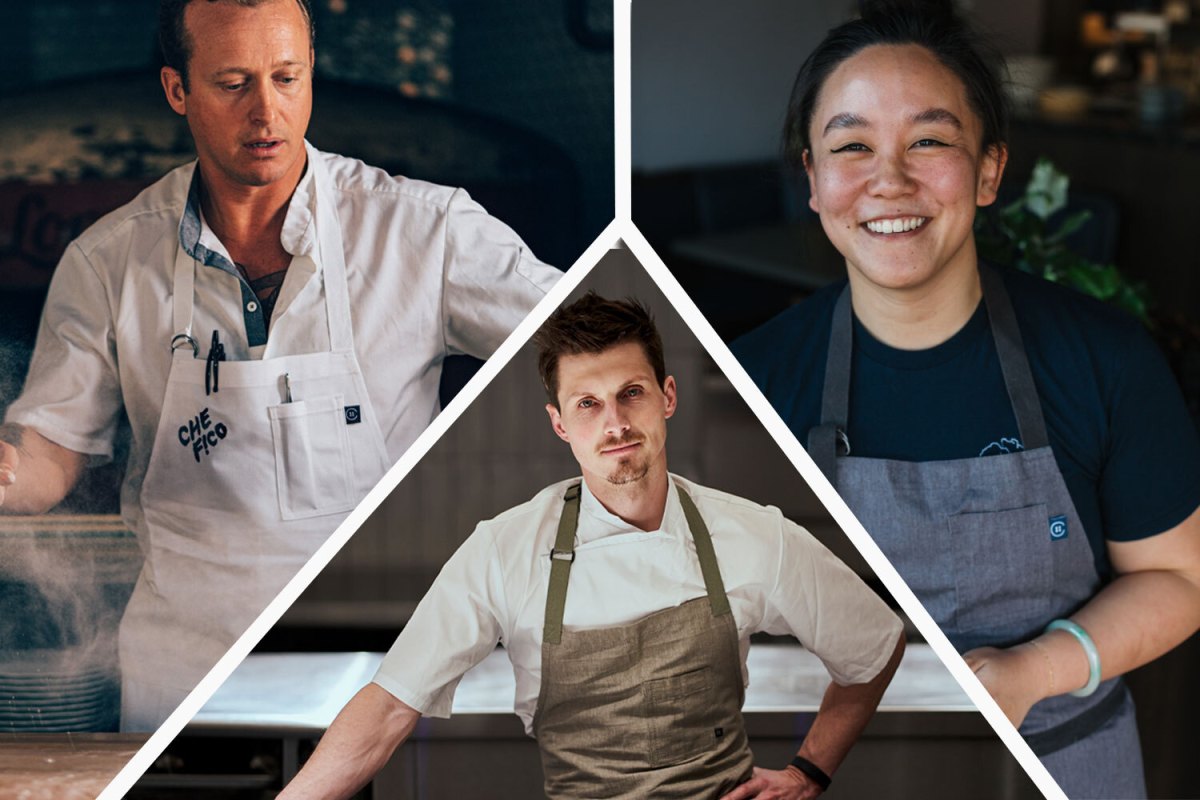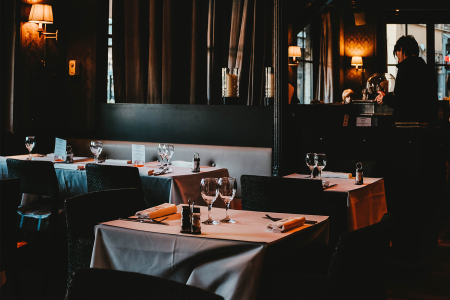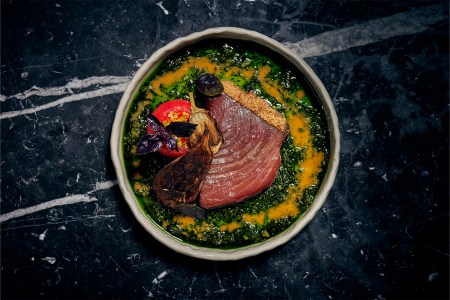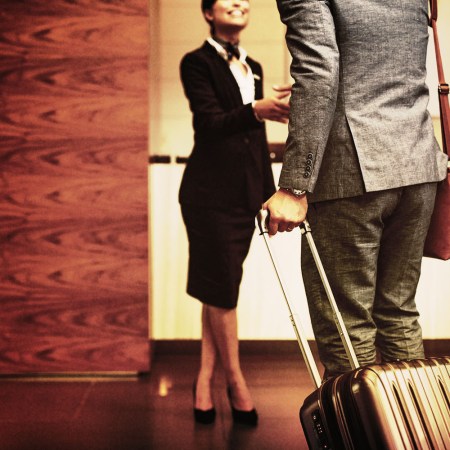Restaurants don’t look like they used to, and we’re not just talking about QR-code menus. A variety of factors, only some of which are linked to the pandemic, have shed light on pervasive underlying issues that have long plagued the restaurant world — and inspired some in the Bay Area to work on dismantling the model that has long been the norm.
For David Nayfeld of Che Fico and Che Fico Alimentari, the impetus for change stemmed from “over 20 years in my industry living below the poverty line.”
“I’ve worked only at two- and three-Michelin-starred restaurants,” he says. “The people I was feeding could afford private jets to fly there. I could barely make rent in the place I was living.”
It’s a story, he says, that’s far from unique; such treatment was long accepted as part and parcel of restaurants, alongside impossibly long hours and a toxic environment that seemed to thrive on abasing the very people who made it work.
“We knew that we needed to make that sacrifice if we wanted this pot of gold on the other side,” he says of the kitchen culture that left many of his colleagues burnt out…and ready to take it out on the next generation of cooks.
“Most of the people I saw around me — even, by the way, the chefs that had attained some level of fame and fortune — they were miserable people on the inside,” he says. “They had failing relationships. They were really struggling with their families. Their health was failing. They were not taking care of themselves. Emotionally, they were really kind of battered and beat up. And the people that worked for them, frankly, fucking hated them.”
One major way that the restaurant model of yore is evolving comes before you even pony up to the bar. After years of people abusing the privilege of a free reservation, some restaurateurs are taking essential steps to protect their bottom line, charging for no-shows and last-minute cancellations.
“Before we put in place a cancellation policy, we would have 30 to 40% cancellations, and that’s just not a workable model,” says Seth Stowaway, executive chef and owner of Osito and Liliana.
“From the standpoint of overhead margins, green sustainability and ordering, knowing a target number of diners really helps reduce waste and allows us to guarantee shifts for our team,” says Serena Chow Fisher, executive pastry chef at Marlena. “When guests choose to dine with us, they are looking for an experience, and we are better able to curate that experience knowing how many people we will be providing for.”
David Barzelay was at the forefront of this trend at his Lazy Bear, which has been ticketed — and non-refundable — since 2009.
“I would say that this system protects restaurants, restaurant employees and customers from bearing the costs of no-shows,” he says. “If restaurants bear the cost of cancellations, they ultimately must pass that cost on to all of their non-canceling customers in the form of higher prices.”
He has the data to back it up. At his Automat, he doesn’t charge for no-shows. If he were to experience the same percentage of same-day cancellations at Lazy Bear, he says, prices at the fine-dining spot would have to be at least 30% higher, and the lack of consistency for staff “would make it very difficult to run the business at all.”
Of course, not all restaurants take cancellations quite as far as Barzelay’s no-refunds policy.
“Life happens and things come up,” says Fisher. “Fees can always be waived, but losing a table last minute can be very stressful, and the credit card number offers the restaurant some guest accountability as well.”
But charging for no-shows can be dicey and open a restaurant up to complaints or bad reviews. So others, like Mica Talmor, chef-owner of Oakland’s Pomella, take a different tack, opting not to take reservations at all.
“For us, reservations don’t make sense,” she says. “To reserve a table means to prevent other patrons from using it while we wait for a guest to arrive. It means managing and policing customers.”
Another way that restaurants can protect the integrity of the dining experience is by adopting a prix fixe model, as Osito, Marlena and Lazy Bear have done. Andrew Freeman, founder of lifestyle marketing company AF&Co, has noticed this as a rising trend, citing specifically “the rise of the two-digit tasting menu” like Oakland’s own Mama Oakland, whose three-course dinner is just $36.95.
“The more affordable tasting menu format still allows chefs to express their creativity but plan the menu more accurately, while controlling costs of both food and labor,” he says. “For consumers, they offer a unique opportunity to experience the bounds of a chef’s creativity — for a fraction of the price.”
Which brings us to yet another major change we’ve seen blossoming in the Bay Area: the elision of that little tip line, and the expectation of gratuity to the tune of 15, 20, 25 or even 30% of the bill. Marlena is one of many restaurants to opt, instead, for a 20% service charge.
“We find this to be the best approach for a sustainable future,” says Fisher, “because it ensures that members of our staff are always able to count on the money and provide for their families in a more transparent way.”
Stowaway, too, has transitioned to a built-in service charge in lieu of gratuity.
“We hope that this is a step to get diners to understand what restaurant prices really are,” he says. “Frankly in the future, I hope this ‘service charge’ line item goes away completely and we see service fees and tips just included in the pricing.”
Barzelay shares these hopes, though he’s not optimistic that this change will come to fruition any time soon. While he notes that charging a single price is better for both restaurants and consumers, who enjoy more transparency from the get-go, he acknowledges that “almost no restaurants use this system, and most that have tried it have quickly retreated.”
Where Does the No-Tipping Trend Go From Here? An SF Restaurant Vet Weighs In.
A nuanced perspective on the service fee debate, straight from the sourceIndeed, at Pomella, Talmor maintains a more traditional tipping model.
“A 20% built-in tip with counter service is too much for customers to embrace,” she says, noting that despite paying a living wage and providing benefits, tips give workers a much-needed supplement to help contend with the cost of living in Oakland. And, she adds, making the choice to tip may make diners “feel a little altruistic.”
“Staff love getting the extra money, and they feel seen and appreciated,” she says. “This model leaves everyone with positive feelings.”
Barzelay, meanwhile, has opted for the mandatory service charge model, which has proven the lesser of two evils for consumers, largely, he says, because “people are terrible at math.”
“A large portion of potential customers experience sticker shock when viewing prices for restaurants with gratuity actually incorporated into the base price,” he says, noting nevertheless that a service charge, even if it’s publicized in advance, can prove “an unwelcome surprise” at the end of the meal. His solution, however imperfect it may be, seems the only workable one until the restaurant world reaches quorum on the best model moving forward.
“If every place switched over,” he says, “then people’s math skills wouldn’t come into play, and comparison shopping would be so much easier. But as long as some restaurants hold onto the expectation of voluntary tipping, it will remain very difficult for any restaurants to eliminate either tipping or service charges.”
Ultimately, each of these issues is but a small piece of the overarching puzzle restaurateurs are attempting to solve: how to better refocus the restaurant experience on improving the lives of the people behind them.
“Generally, as a group, restaurant workers are comprised of an incredible range of backgrounds, unlike anything I have experienced in other professions,” explains Sunil Bhatt, partner and CEO of the Genuine Hospitality Group. “Because their makeup and job functions are so broad and diverse, sometimes I think they lack the ability to advocate for themselves as a group, often leading to a lack of representation and possibly even stratification in the way folks are treated.”
Traditionally, Nayfeld contends, it was a work environment largely fueled by fear and an odd sense of “omerta.”
“We were ready to fall on a sword for them,” he says of the domineering chefs who long loomed large, but “at the end of the day, that wasn’t real love and respect.”
Many modern restaurateurs are attempting a total 180, sometimes with palpable changes to the very dining experience. After years of scandals launched by the #MeToo movement, Freeman explains, “another industry issue has been brought to light: chefs taking credit for the work of others [and] cooks not getting credit for dishes they created.”
As a result, he says, “Some restaurants have begun to try to right the wrongs and give credit to their entire teams — upending decades, if not centuries, of tradition where the head chef gets all the credit for every dish produced.”
Chef Mike Lanham, who is about to open his debut restaurant, Anomaly SF, notes that at his restaurant, dishes will largely be run by kitchen staff, cutting back on the size of the service team and allowing cooks to shine.
“Kitchen team members are more knowledgeable about the dishes than anyone else,” he says. “It makes sense that they would run the food.”
It’s a model used by Hi Felicia in Oakland, where every member of staff is introduced during an initial Cava toast. About halfway through the meal, the entire team comes into the main dining room, explaining the dishes they were responsible for that night and any personal connections to it.
Fish Sourcing Is Mostly BS — But One SF Chef Is Trying to Change That
At Palette, Peter Hemsley is doing the hard work of living by his idealsRecognizing labor is just the tip of the iceberg in improving morale. At his restaurants, Stowaway has put into place a tiered management system, the likes of which generally only exists in hospitality businesses with multiple spaces, and has set out an equitable pay scale model where everyone is paid hourly and is guaranteed two paid week-long holidays. Lanham has taken a stand in compensating traditionally unpaid stages, as has Barzelay, who has also committed to more equitable compensation for back-of-house staff and shorter shifts for everyone, including managers.
“We have found that these practices are more challenging,” says Stowaway, “but we believe that if the restaurant is meant to succeed, it is meant to succeed in this way. And if in this way it doesn’t work, then we don’t believe that it’s a business worth running.”
Still, margins remain razor-thin. Fine-dining restaurants are some of the only ones, according to Barzelay, that can charge prices that even come close to reflecting true costs. At his mid-range Automat, prices are about a fourth of those for Lazy Bear’s tasting menu — a discrepancy that doesn’t at all account for the true difference in costs. And the issue, he says, only gets worse at more inexpensive restaurants, where lofty overheads make it hard to break even.
“We encourage discussions about wellness and mental health and encourage employees to make those priorities in their lives,” he says. “We have open conversations about employees’ contributions and growth with the company. And we offer tons of perks. But all of that is possible because we charge a lot for a meal, and manage (so far) to stay full every night.”
Years of price stagnancy and a handful of “uniquely local problems,” according to Barzelay, “have led to the current crisis in which it’s nearly impossible for single-location casual restaurants to survive in San Francisco.”
To change this, restaurateurs agree, one more major change still needs to take place.
“Truly the only way to make it better is we have to make it more profitable,” says Nayfeld. “Everyone is afraid to say that, because they think it’s a dirty word, but with those profits, we have to take care of our teams better. We need to pay them more. We need to take care of ourselves better and create savings and create wealth. And we need to take care of our community better.”
Restaurant meals are already too costly for many, an issue that Nayfeld recognizes. But if higher prices reduce the influx of clients, he says, “I 100% welcome that.”
“If that drives people to cook in their own homes with their families more days than not, then that’s fine with me,” he says. “Restaurants were never meant to be this thing where you dined at three days a week, five days a week.”
Indeed, restoring dining out’s special occasion connotation may be the best way of preserving restaurant culture — and, for that matter, preserving the people behind it.
Every Thursday, our resident experts see to it that you’re up to date on the latest from the world of drinks. Trend reports, bottle reviews, cocktail recipes and more. Sign up for THE SPILL now.


























